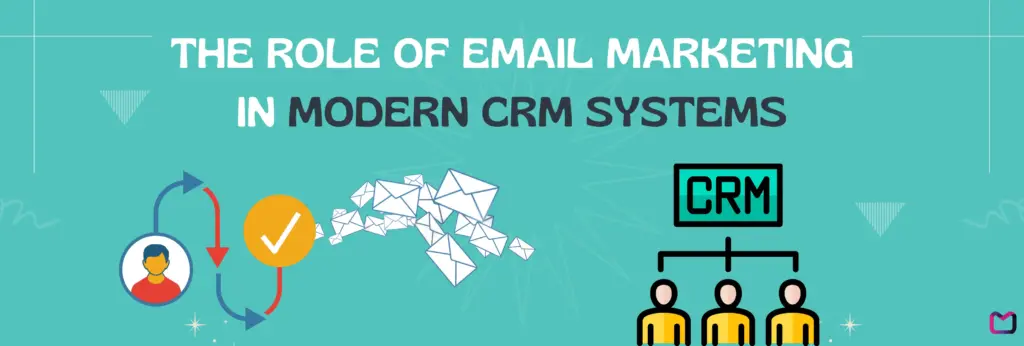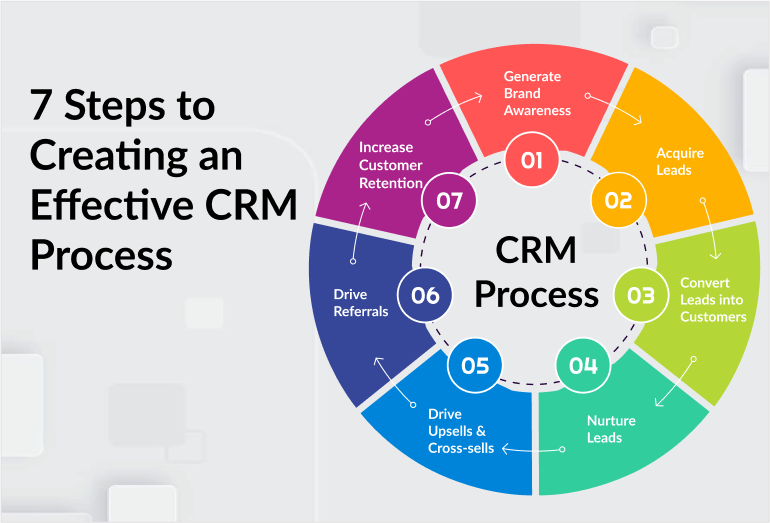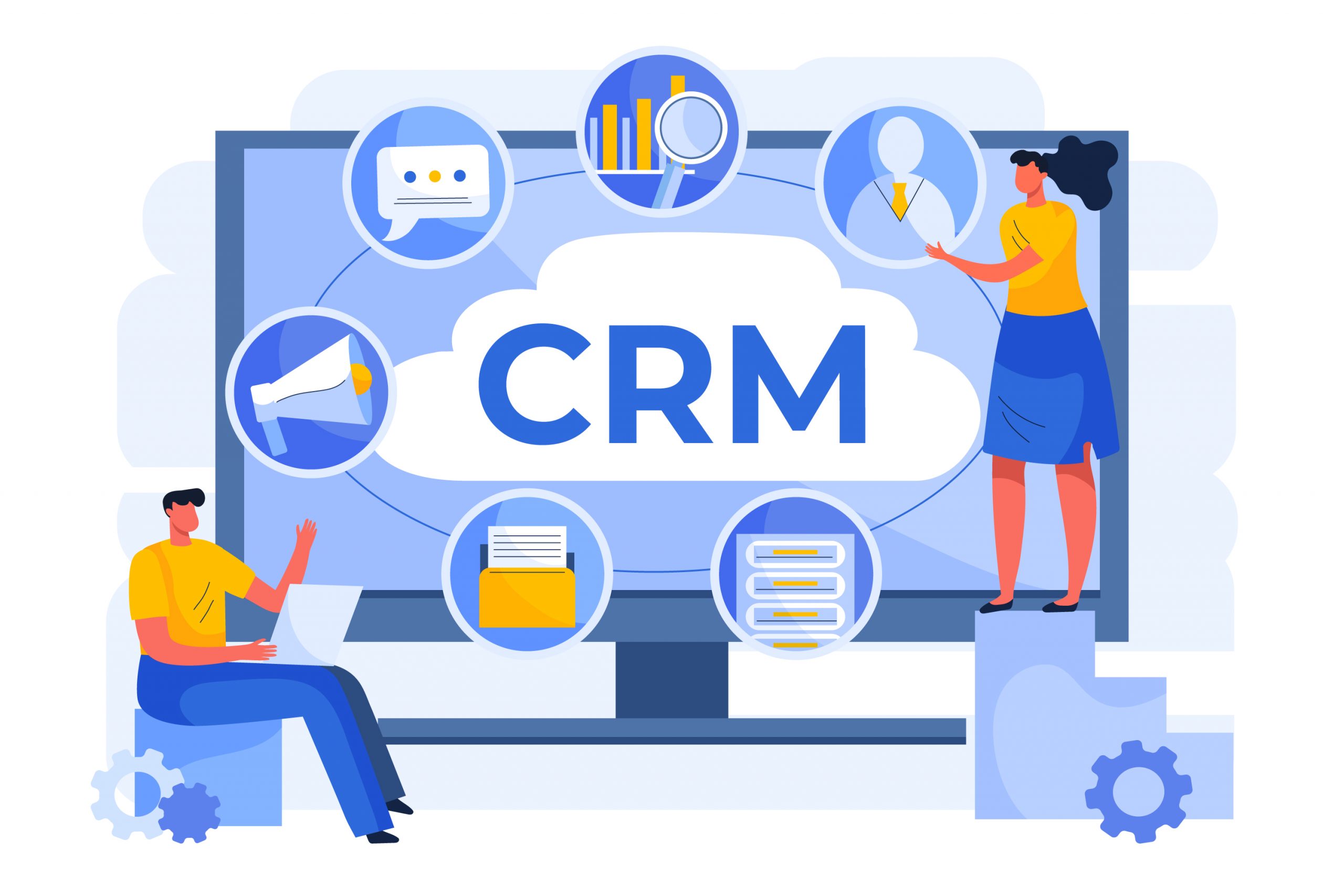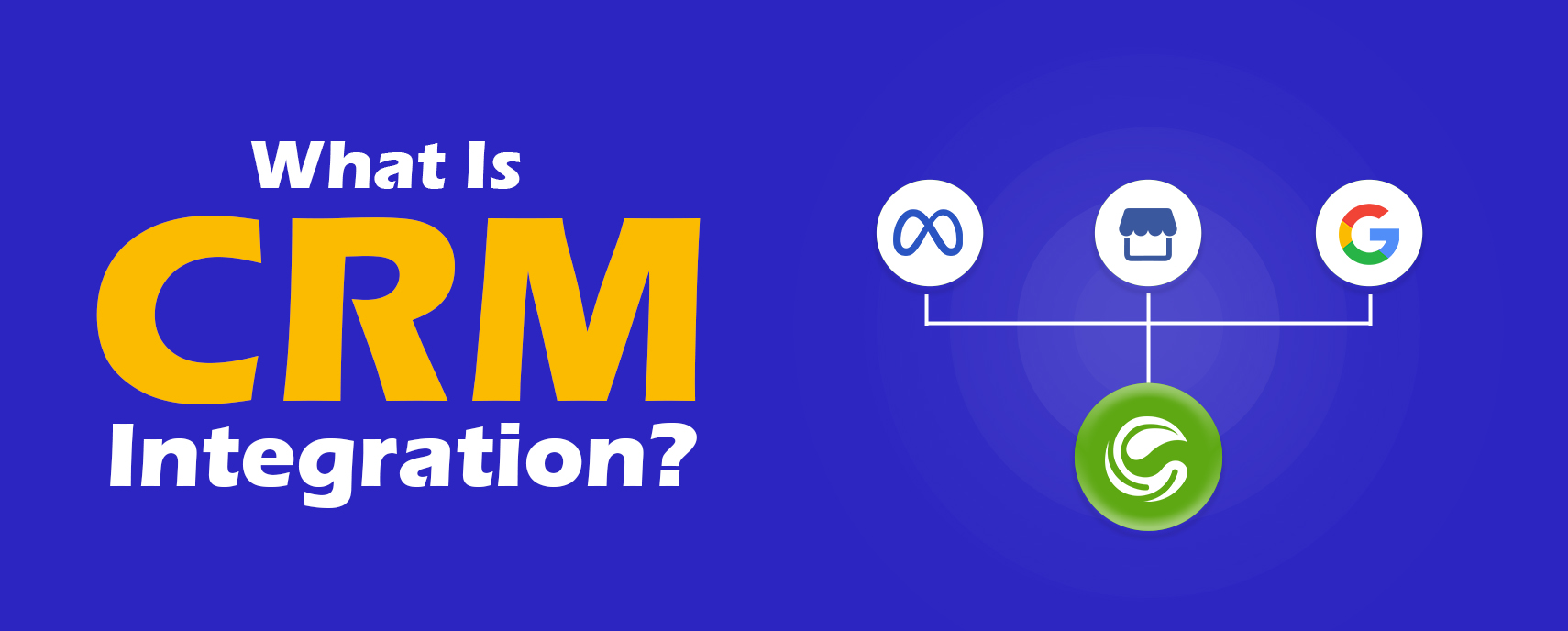
CRM Email Marketing: The Ultimate Guide to Growing Your Business
In today’s fast-paced digital landscape, businesses are constantly seeking innovative ways to connect with their target audience, nurture leads, and ultimately, drive sales. One of the most powerful strategies for achieving these goals is through the strategic integration of Customer Relationship Management (CRM) systems and email marketing. This guide delves deep into the world of CRM email marketing, exploring its benefits, best practices, and how you can leverage it to significantly grow your business.
What is CRM Email Marketing?
At its core, CRM email marketing is the practice of using a CRM system to manage and optimize your email marketing campaigns. It’s about more than just sending out generic newsletters; it’s about personalizing your communications, segmenting your audience, and delivering targeted messages that resonate with individual customers and prospects. Think of it as the intersection of two incredibly powerful tools: your CRM, which houses all your customer data, and your email marketing platform, which allows you to communicate directly with your audience.
By integrating these two, you gain a holistic view of your customers, allowing you to tailor your email content, timing, and offers to their specific needs and preferences. This leads to higher engagement rates, improved conversion rates, and ultimately, a stronger bottom line.
The Benefits of CRM Email Marketing
The advantages of combining CRM and email marketing are numerous. Here are some of the key benefits:
- Enhanced Personalization: CRM systems store a wealth of customer data, including purchase history, demographics, preferences, and website behavior. This information allows you to personalize your email content, addressing customers by name, recommending relevant products, and tailoring your offers to their individual needs. This level of personalization fosters a stronger connection with your audience, making them feel valued and understood.
- Improved Segmentation: With a CRM, you can segment your audience based on a variety of criteria, such as demographics, purchase history, engagement levels, and lead source. This allows you to send highly targeted emails that are relevant to specific groups of customers. For instance, you could send a special offer to customers who haven’t made a purchase in the last six months or a product recommendation to those who have shown interest in a particular category.
- Increased Engagement: Personalized and targeted emails are far more likely to be opened, read, and acted upon than generic, mass-sent emails. By delivering relevant content at the right time, you can significantly increase your engagement rates, leading to more clicks, conversions, and ultimately, sales.
- Higher Conversion Rates: CRM email marketing allows you to nurture leads through the sales funnel, providing them with valuable information and offers at each stage. By understanding where a prospect is in their buying journey, you can send them the right content to move them closer to a purchase.
- Better Lead Management: CRM systems help you track and manage your leads effectively. You can identify high-potential leads, nurture them with targeted email campaigns, and seamlessly hand them off to your sales team when they’re ready to convert.
- Automation: CRM systems allow you to automate many of your email marketing tasks, such as sending welcome emails, follow-up sequences, and cart abandonment emails. This frees up your time to focus on other important aspects of your business.
- Improved Customer Retention: By staying in touch with your customers through personalized email communications, you can build stronger relationships and increase customer loyalty. This can lead to repeat purchases, positive word-of-mouth referrals, and a higher customer lifetime value.
- Detailed Reporting and Analytics: CRM systems provide you with detailed reports and analytics on your email marketing performance. You can track open rates, click-through rates, conversion rates, and other key metrics to understand what’s working and what’s not. This data-driven approach allows you to continuously optimize your campaigns for better results.
Choosing the Right CRM and Email Marketing Tools
Selecting the right CRM and email marketing tools is crucial for the success of your CRM email marketing strategy. Here are some factors to consider:
- Integration Capabilities: Ensure that your CRM and email marketing platforms can seamlessly integrate with each other. This will allow you to easily sync your customer data and automate your email marketing workflows.
- Features and Functionality: Look for a CRM and email marketing platform that offers the features and functionality you need, such as segmentation, personalization, automation, and reporting.
- Scalability: Choose a platform that can scale with your business as it grows. You don’t want to have to switch platforms down the line because your current one can’t handle your increasing needs.
- Ease of Use: Opt for a platform that is user-friendly and easy to navigate. This will save you time and frustration in the long run.
- Pricing: Consider your budget and choose a platform that offers a pricing plan that fits your needs.
- Customer Support: Make sure the platform offers excellent customer support in case you encounter any issues.
Here are some popular CRM and email marketing platform combinations:
- Salesforce & Marketing Cloud: A powerful combination for large enterprises.
- HubSpot CRM & HubSpot Marketing Hub: An all-in-one solution ideal for businesses of all sizes.
- Zoho CRM & Zoho Campaigns: A cost-effective option for small to medium-sized businesses.
- Microsoft Dynamics 365 & Dynamics 365 Marketing: A robust solution for businesses already using other Microsoft products.
- Pipedrive & Mailchimp: A user-friendly option for sales-focused businesses.
Setting Up Your CRM Email Marketing Strategy
Once you’ve chosen your tools, it’s time to set up your CRM email marketing strategy. Here are the key steps:
- Define Your Goals: What do you want to achieve with your CRM email marketing campaigns? Increase sales? Improve customer retention? Generate more leads? Clearly define your goals to guide your strategy.
- Segment Your Audience: Identify different customer segments based on their demographics, purchase history, engagement levels, and other relevant criteria.
- Create Targeted Email Campaigns: Develop email campaigns that are tailored to each segment. Your content should be relevant, valuable, and engaging.
- Personalize Your Emails: Use customer data to personalize your emails, including their name, purchase history, and preferences.
- Automate Your Workflows: Set up automated email workflows to streamline your processes, such as welcome emails, abandoned cart emails, and follow-up sequences.
- Track Your Results: Monitor your email marketing performance using detailed reports and analytics. Track open rates, click-through rates, conversion rates, and other key metrics to understand what’s working and what’s not.
- Continuously Optimize: Regularly review your email marketing performance and make adjustments to your strategy to improve your results. A/B test different subject lines, email content, and calls to action to see what resonates best with your audience.
Best Practices for CRM Email Marketing
To maximize the effectiveness of your CRM email marketing campaigns, consider these best practices:
- Build a Quality Email List: Focus on building a list of subscribers who are genuinely interested in your products or services. Avoid buying email lists, as this can lead to low engagement rates and damage your sender reputation. Use opt-in forms on your website, offer valuable content in exchange for email sign-ups, and clearly communicate what subscribers can expect to receive.
- Segment Your Audience Effectively: Don’t treat all your subscribers the same. Segment your audience based on their demographics, purchase history, engagement levels, and other relevant criteria. This will allow you to send targeted emails that are more relevant to their needs and preferences.
- Personalize Your Emails: Use customer data to personalize your emails, including their name, purchase history, and preferences. This will make your emails feel more relevant and engaging.
- Write Compelling Subject Lines: Your subject line is the first thing your subscribers will see, so make it count. Write subject lines that are attention-grabbing, relevant, and intriguing. Use personalization in your subject lines to increase open rates.
- Create Engaging Email Content: Your email content should be valuable, informative, and visually appealing. Use high-quality images, videos, and other multimedia elements to capture your subscribers’ attention. Keep your content concise and easy to read.
- Include a Clear Call to Action: Tell your subscribers what you want them to do. Include a clear and concise call to action in your emails, such as “Shop Now”, “Learn More”, or “Download Now”. Make your call to action visually prominent.
- Optimize for Mobile Devices: Ensure that your emails are mobile-friendly. Most people check their email on their mobile devices, so your emails should be designed to look good on all screen sizes.
- Test and Optimize Your Campaigns: Regularly test your email campaigns to see what’s working and what’s not. A/B test different subject lines, email content, and calls to action to see which versions perform best. Use the data from your tests to continuously optimize your campaigns.
- Comply with Email Marketing Regulations: Ensure that you comply with all email marketing regulations, such as GDPR and CAN-SPAM. This includes obtaining consent from subscribers before sending emails, providing an easy way for subscribers to unsubscribe, and including your physical address in your emails.
- Monitor Your Deliverability: Keep a close eye on your email deliverability. Ensure that your emails are reaching your subscribers’ inboxes and not being marked as spam. Use email deliverability tools to monitor your sender reputation and identify any potential issues.
Examples of Effective CRM Email Marketing Campaigns
To illustrate the power of CRM email marketing, let’s look at some examples of effective campaigns:
- Welcome Series: This series of emails welcomes new subscribers and introduces them to your brand, products, or services. It’s a great opportunity to set expectations, build relationships, and encourage engagement.
- Abandoned Cart Emails: These emails are triggered when a customer adds items to their cart but doesn’t complete the purchase. They remind the customer of the items in their cart and offer a gentle nudge to complete the purchase.
- Product Recommendation Emails: These emails recommend products based on a customer’s purchase history, browsing behavior, or expressed interests. They are a great way to drive sales and increase customer lifetime value.
- Customer Anniversary Emails: These emails celebrate a customer’s anniversary with your brand, such as their first purchase or their subscription start date. They are a great way to show appreciation and build loyalty.
- Re-engagement Emails: These emails are sent to subscribers who haven’t engaged with your emails in a while. They offer a special promotion or valuable content to re-engage them and get them back on your list.
- Segmentation-based campaigns: Sending targeted emails to specific segments of your audience based on their demographics, behavior, or purchase history. For example, you could send a specific promotion to customers who have spent over a certain amount in the past year.
Measuring the Success of Your CRM Email Marketing
To effectively measure the success of your CRM email marketing campaigns, you need to track a variety of key metrics. These metrics will provide valuable insights into the performance of your campaigns and help you identify areas for improvement.
- Open Rate: The percentage of subscribers who open your email. A high open rate indicates that your subject lines are effective and that your audience is engaged.
- Click-Through Rate (CTR): The percentage of subscribers who click on a link in your email. A high click-through rate indicates that your email content is relevant and engaging.
- Conversion Rate: The percentage of subscribers who complete a desired action, such as making a purchase or filling out a form. A high conversion rate indicates that your email campaigns are effective at driving conversions.
- Bounce Rate: The percentage of emails that were not delivered to the recipient’s inbox. A high bounce rate indicates that your email list may contain invalid or outdated email addresses.
- Unsubscribe Rate: The percentage of subscribers who unsubscribe from your email list. A high unsubscribe rate may indicate that your email content is not relevant or that you are sending emails too frequently.
- List Growth Rate: The rate at which your email list is growing. A healthy list growth rate indicates that you are attracting new subscribers.
- Return on Investment (ROI): The amount of revenue generated by your email marketing campaigns. Tracking your ROI will help you determine the profitability of your campaigns.
- Customer Lifetime Value (CLTV): The total revenue a customer is expected to generate throughout their relationship with your business. CRM email marketing can help increase CLTV by improving customer retention and encouraging repeat purchases.
By regularly monitoring these metrics, you can gain a comprehensive understanding of your email marketing performance and make data-driven decisions to optimize your campaigns for better results.
Overcoming Challenges in CRM Email Marketing
While CRM email marketing offers significant benefits, there can be challenges along the way. Here are some common hurdles and how to overcome them:
- Data Integration Issues: Integrating your CRM and email marketing platforms can sometimes be complex. Ensure that you choose platforms that seamlessly integrate and have a dedicated team or partner to assist if needed.
- Data Accuracy and Hygiene: The accuracy of your customer data is critical. Regularly clean and update your data to ensure that your emails are being sent to the correct recipients. Implement data validation processes and use tools to identify and correct errors.
- Personalization Challenges: Personalizing emails effectively requires a deep understanding of your customers. Start with basic personalization, like addressing customers by name, and gradually add more advanced personalization based on their behavior and preferences.
- Segmentation Difficulties: Segmenting your audience can be time-consuming. Start with broad segments and refine them over time as you gather more data. Use automated segmentation tools to streamline the process.
- Deliverability Issues: Email deliverability can be a constant battle. Monitor your sender reputation, avoid spam triggers, and regularly clean your email list to ensure that your emails are reaching your subscribers’ inboxes.
- Keeping Up with Trends: The email marketing landscape is constantly evolving. Stay up-to-date on the latest trends and best practices by following industry blogs, attending webinars, and participating in online communities.
The Future of CRM Email Marketing
CRM email marketing is poised for continued growth and evolution. Here are some trends to watch:
- Artificial Intelligence (AI): AI is being used to personalize email content, optimize send times, and automate email marketing tasks.
- Hyper-Personalization: Businesses are moving beyond basic personalization to deliver highly tailored email experiences based on individual customer behavior and preferences.
- Interactive Emails: Interactive elements, such as polls, quizzes, and surveys, are being incorporated into emails to increase engagement.
- Video in Email: Video is becoming increasingly popular in email marketing to capture attention and convey messages effectively.
- Focus on Privacy: With growing concerns about data privacy, businesses are prioritizing data security and transparency in their email marketing practices.
- Omnichannel Integration: CRM email marketing is increasingly integrated with other marketing channels, such as social media and SMS, to provide a seamless customer experience.
Conclusion
CRM email marketing is a powerful strategy for businesses looking to build stronger customer relationships, nurture leads, and drive sales. By integrating a CRM system with your email marketing platform, you can personalize your communications, segment your audience, and deliver targeted messages that resonate with individual customers. By following best practices, regularly monitoring your results, and staying up-to-date on the latest trends, you can leverage CRM email marketing to significantly grow your business.
Embrace the power of CRM email marketing and watch your business thrive!


